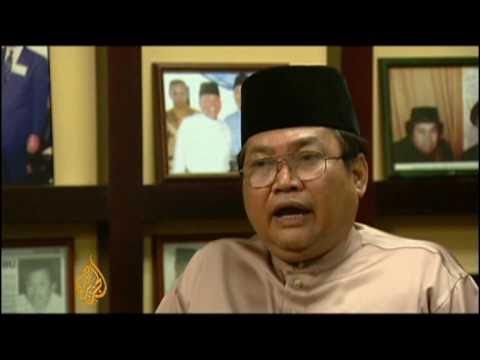Кінохроніки Києва 1920-х років: яким було місто століття тому?
Summary
TLDRThis transcript describes a documentary about Kyiv in the late 1920s, capturing significant architectural and societal changes during the last years of the New Economic Policy (NEP) period in Soviet Ukraine. The film showcases historical buildings like Khreshchatyk, the bridge over the Dnipro River, and the Contract Fair. Many of these structures no longer exist, and the footage reflects both urban transformation and the impact of NEP on private entrepreneurship. It also covers military drills, a fair in Kaharlyk village, and other scenes of daily life in the city and surrounding areas.
Takeaways
- 🏙️ The video shows rare footage of Kyiv in the late 1920s, highlighting significant changes over the last century.
- 🌉 Featured in the footage are historical structures like the old Khreshchatyk street, the now-nonexistent Dnipro bridge, and frequent floods that once submerged Trukhaniv Island.
- 🏛️ The video captures Kyiv during the last years of the NEP (New Economic Policy), a period when the Soviet government temporarily allowed small-scale private enterprise.
- 🛍️ The footage includes private shops and the last crowded Kontraktova fair before the eventual banning of private entrepreneurship by the Soviet regime.
- 🌉 The film chronicles military training and historical routes in Kyiv, including the now-destroyed Eugenia Bosch Bridge, rebuilt on the remnants of an older chain bridge destroyed during the Civil War.
- 📜 The video focuses on documenting not just the events but also the city’s buildings and streets that have either survived or been demolished since then.
- 🏞️ The footage captures significant locations, including the National Art Museum, Khreshchatyk street, and the old Philharmonic building, showing their historical evolution.
- 📡 Scenes from rural areas, such as the village of Kaharlyk, depict traditional windmills and homes, as well as the introduction of technology like radios in rural households.
- 🛒 The film also covers the NEP era’s economic aspects, including the opening of Kontraktova fairs, which were crucial for small entrepreneurs before the NEP was abolished in the 1930s.
- 🏗️ Historical landmarks, including the city hall on Independence Square, are shown before their destruction during WWII, along with other buildings like the bell tower of the Trinity Church.
Q & A
What city is featured in the video, and during what time period?
-The video features Kyiv during the late 1920s, from 1927 to 1930.
What was the NEP mentioned in the video, and how did it affect the economy?
-The NEP, or New Economic Policy, was a temporary economic liberalization by Soviet authorities, allowing small-scale private entrepreneurship to revive trade and industry after the war. It helped some private businesses, known as 'Nepmen,' flourish before being rolled back in the 1930s.
Which significant landmark, now no longer existing, is mentioned as having appeared in the video?
-The video shows the bridge named after Yevgeniya Bosch, which was built on the foundations of an older chain bridge that was destroyed during the Civil War in 1920.
How does the video document changes in Kyiv's infrastructure?
-The video captures many historical landmarks in Kyiv, including streets like Khreshchatyk and buildings that no longer exist today, such as the Municipal Duma and Trehsvyatitelskaya Church bell tower. It also shows the Chain Bridge and the Contract Square during one of the final Contract Fairs.
What was the Contract Fair, and why was it significant in Kyiv during the NEP era?
-The Contract Fair in Kyiv was a major market event that showcased small private businesses under the NEP. It attracted significant public interest and was one of the few legal venues for private enterprise before the NEP was abolished in the 1930s.
What evidence is provided in the video to show the exact location of the old chain bridge?
-The video references historical maps, such as topographical surveys from the 1920s, and photographic evidence of the bridge's remains near the current Metro Bridge, confirming its location.
How does the video illustrate the state of Kyiv’s riverbanks and Trukhaniv Island in the late 1920s?
-The video shows Trukhaniv Island during a spring flood, highlighting its private residential buildings, school, and church. It also captures the Park on Volodymyrska Hill and the floating logs down the Dnipro River, used for construction materials.
What role did the Kyiv Film Studio play in the late 1920s, and who was one of its most famous directors?
-The Kyiv Film Studio, established on Shuliavka, was the largest film studio in the Soviet Union at the time. It played a key role in Soviet film production and propaganda. One of its most famous directors was Oleksandr Dovzhenko, known for films like 'Earth.'
What event led to the destruction of many historical buildings in Kyiv, including the Municipal Duma?
-Many historical buildings in Kyiv, including the Municipal Duma, were destroyed in 1941 during World War II. They were either bombed or demolished during the German retreat.
What does the video show about the early 20th-century transportation system in Kyiv?
-The video shows trams running along Kyiv’s streets, including the tracks on modern-day Hrushevskoho Street and other key areas. It also illustrates how Kyiv's streets were bustling with people during major events such as military parades and fairs.
Outlines

This section is available to paid users only. Please upgrade to access this part.
Upgrade NowMindmap

This section is available to paid users only. Please upgrade to access this part.
Upgrade NowKeywords

This section is available to paid users only. Please upgrade to access this part.
Upgrade NowHighlights

This section is available to paid users only. Please upgrade to access this part.
Upgrade NowTranscripts

This section is available to paid users only. Please upgrade to access this part.
Upgrade NowBrowse More Related Video
5.0 / 5 (0 votes)





